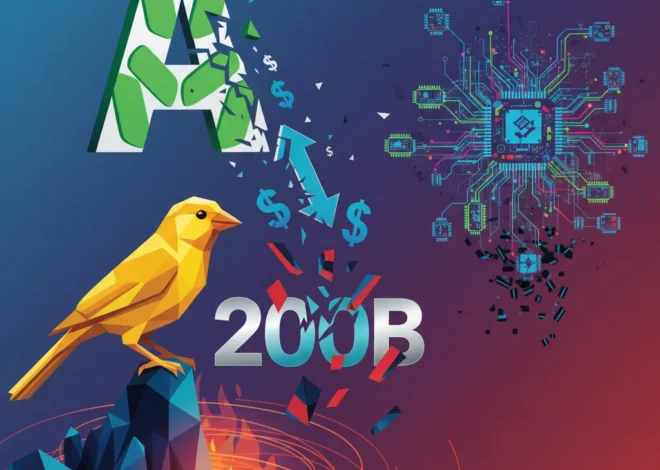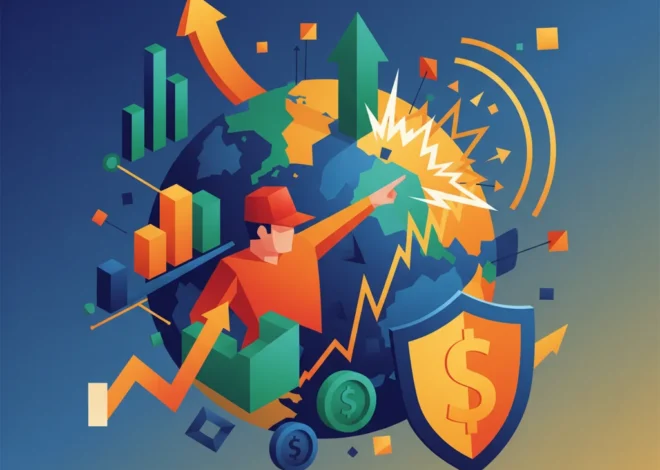
Beyond the Hype: Why Climate Risk is the Real “Monkey Business” for the Global Economy
In the fast-paced world of finance, the siren call of the next big thing is deafening. Daily headlines scream about meme stock rallies, crypto-crashes, and quarterly earnings surprises. This constant churn of information, this “monkey business,” captures our attention and drives short-term trading decisions. It’s exciting, it’s volatile, and it’s often where the financial media focuses its lens. Yet, as a recent letter to the Financial Times aptly put it, the real monkey business—the most disruptive, systemic, and under-priced risk on the horizon—is human-caused climate destruction.
While the stock market obsesses over fleeting trends, a much larger, slower-moving, and more consequential economic transformation is underway. This isn’t a single event but a fundamental repricing of everything, from physical assets and infrastructure to entire business models. For investors, finance professionals, and business leaders, ignoring this tectonic shift is not just a failure of social responsibility; it’s a catastrophic failure of financial risk management. This article will delve into why the long-term economic implications of climate change dwarf short-term market noise and how the financial industry must adapt to survive and thrive in this new reality.
The Dangerous Allure of Market Distractions
The modern financial ecosystem, supercharged by fintech and instantaneous information flow, is structurally biased towards the short term. High-frequency trading algorithms execute millions of orders in seconds, retail investors on slick apps can pile into a “meme stock” based on a social media trend, and corporate leadership is often relentlessly judged on quarterly performance. This environment creates a powerful incentive to focus on immediate volatility rather than long-term value creation.
This “tyranny of the urgent” creates profound blind spots. A company might beat its earnings-per-share estimate by a penny and see its stock soar, even if its entire supply chain is located in a region facing unprecedented drought and water scarcity. The immediate reward (the stock bump) is visible and celebrated, while the long-term risk (supply chain collapse) is abstract and discounted. This is a classic case of confusing signal with noise. The real signal for long-term investors isn’t the daily chatter of the stock market; it’s the steady, increasingly urgent data on rising global temperatures, extreme weather events, and resource depletion.
The global economy is facing a paradigm shift, and clinging to outdated models of risk assessment is a recipe for disaster. The “monkey business” of the day is a distraction from the fundamental re-engineering of our world.
The Investor's Gambit: Why 'Uncanny Timing' is a Myth in a Volatile Market
Unpacking the Real Systemic Risk: The Economics of a Warming Planet
To understand why climate change is the ultimate systemic risk, we must move beyond abstract environmental concerns and analyze it through the cold, hard lens of economics and finance. The risks are not distant or theoretical; they are already materializing on corporate and national balance sheets. They can be broadly categorized into two types: physical risks and transition risks.
1. Physical Risks: The Tangible Costs of Inaction
Physical risks are the direct economic costs resulting from climate-related events. These include:
- Infrastructure Damage: Extreme weather events like hurricanes, floods, and wildfires destroy factories, transport links, and entire cities. Rebuilding is immensely costly. According to the NOAA, the U.S. alone has sustained 376 weather and climate disasters since 1980 where overall damages/costs reached or exceeded $1 billion, with the total cost exceeding $2.615 trillion (source).
- Supply Chain Disruption: A drought in one part of the world can halt agricultural production, while a flood in another can shut down a critical semiconductor plant. This creates global shortages, price volatility, and operational chaos for businesses.
- Resource Scarcity: Changes in weather patterns are leading to severe water shortages in key industrial and agricultural regions, threatening everything from food production to manufacturing.
2. Transition Risks: The Inevitable Economic Shift
Perhaps even more disruptive to the financial system are the risks associated with the transition to a low-carbon economy. This transition is no longer a question of “if” but “when” and “how fast.” These risks include:
- Stranded Assets: This is one of the most critical concepts for investors to grasp. A stranded asset is an asset that has suffered from unanticipated or premature write-downs, devaluations, or conversions to liabilities. The most obvious examples are fossil fuel reserves that will become “unburnable” under stricter climate policies. The value of these assets, currently sitting on the books of major corporations, could plummet to zero. Estimates suggest that up to $1 trillion in oil, gas, and coal assets could be stranded by 2035 if the world moves to meet Paris Agreement targets (source).
- Policy and Regulatory Changes: Carbon taxes, emissions trading schemes, and outright bans on certain technologies (like internal combustion engines) will fundamentally alter the competitive landscape. Companies that are not prepared will face crippling costs and loss of market share.
- Technological Disruption: The rapid decline in the cost of renewable energy and battery storage is making old energy business models obsolete. This is a classic case of disruptive innovation that will create a new generation of winners and losers.
The Financial Sector’s Response: From Niche to Mainstream
The financial industry is slowly waking up to this new reality. The most visible manifestation of this is the explosive growth of Environmental, Social, and Governance (ESG) investing. Once a fringe movement, ESG integration is now a central pillar of strategy for many of the world’s largest asset managers. Global sustainable fund assets surged to $2.74 trillion by the end of 2021, demonstrating a seismic shift in capital allocation (source).
The logic is simple: companies with strong ESG performance are often better managed, more innovative, and more resilient to long-term shocks. They are less likely to be surprised by new regulations, more likely to attract top talent, and better positioned to meet the demands of a changing consumer base. While performance can vary, long-term data suggests that a focus on sustainability does not have to come at the expense of returns.
To illustrate, let’s compare the performance of a broad market index with a prominent ESG-focused equivalent over a significant period. The table below shows the annualized returns of the MSCI World Index versus the MSCI World ESG Leaders Index.
| Index | Description | 10-Year Annualized Return (as of Oct 31, 2023) |
|---|---|---|
| MSCI World Index | A broad global equity benchmark that represents large and mid-cap equity performance across 23 developed markets. | 9.14% |
| MSCI World ESG Leaders Index | Consists of large and mid-cap companies across 23 developed markets that have high ESG performance relative to their sector peers. | 9.56% |
Source: Data compiled from MSCI. Past performance is not indicative of future results.
This data indicates that integrating ESG criteria can, over the long term, be correlated with a slight performance advantage, challenging the outdated notion that sustainability is a drag on financial returns. It suggests that companies leading on ESG are simply well-run businesses positioned for the future economy.
The New Financial Frontier: Decoding the Fintech and Blockchain Revolution
The Role of Innovation: Can Financial Technology Pave the Way?
Addressing a challenge of this magnitude requires not just a shift in mindset but also a new generation of tools. This is where financial technology (fintech) and emerging technologies like blockchain have a critical role to play.
Fintech for Climate Finance: The fintech revolution is providing the tools needed to better measure, manage, and act on climate risk. Start-ups are now using AI and satellite imagery to model physical risks to specific corporate assets. Data platforms are aggregating and standardizing complex corporate ESG disclosures, making it easier for investors to separate genuine leaders from “greenwashers.” New retail investing apps are democratizing access to sustainable portfolios, allowing individuals to align their capital with their values.
The Blockchain Potential: While often associated with speculative trading, blockchain technology offers powerful solutions for the green transition. Its core features of transparency, immutability, and decentralization can be applied to:
- Carbon Markets: Creating a transparent and auditable ledger for carbon credits can eliminate double-counting and fraud, increasing trust and liquidity in a critical market for financing emissions reductions.
- Sustainable Supply Chains: Blockchain can be used to track products from source to shelf, verifying claims about sustainable sourcing and ethical labor practices.
- Tokenizing Green Assets: Renewable energy projects could be “tokenized,” allowing for fractional ownership and creating new, liquid investment vehicles that can channel capital directly into green infrastructure.
A Call to Action for a New Economic Era
The evidence is overwhelming. The real “monkey business” for anyone involved in the economy—from a retail trader to a Fortune 500 CEO—is to continue operating as if climate change is a distant, non-financial issue. The transition is happening now, and it will accelerate.
For Investors: Your fiduciary duty now includes understanding and integrating climate risk. Look beyond the quarter. Demand better, standardized climate-related financial disclosures from the companies you invest in. Allocate capital to the innovators building the solutions for a net-zero world.
For Business Leaders: Climate strategy is business strategy. It’s not a subsection of your Corporate Social Responsibility report; it’s a core component of your risk management, supply chain resilience, and long-term competitive advantage. The biggest opportunities for growth in the 21st century will be in decarbonization.
For Finance Professionals: The greatest challenge for banking, trading, and asset management is to develop the models and products that can accurately price climate risk and finance the trillions of dollars needed for the green transition. This is the defining challenge—and opportunity—for your industry.
The noise of the market will always be there. But the enduring signal, the one that will determine the wealth of nations and the success of businesses for decades to come, is our collective response to the economic and physical realities of a changing climate. Focusing on that is the only business that truly matters.


